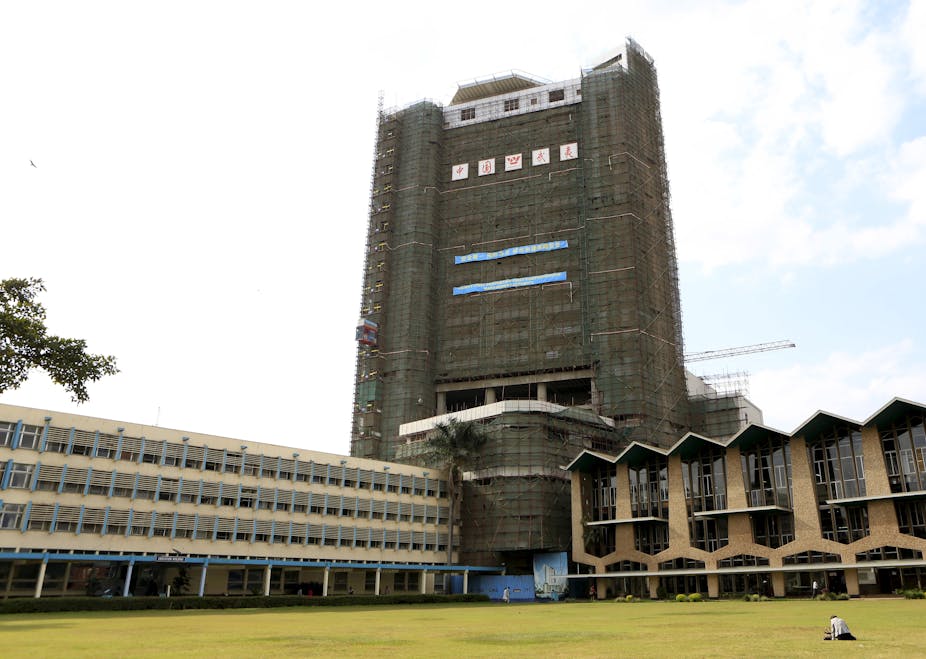A recent audit of public and private universities has laid out in the open what some have long suspected: Kenya’s public institutions are poorly funded and often disgracefully managed.
The litany of ills uncovered in the survey by the Commission for University Education is long. It includes poor record keeping leading to cases of missing grades, the abuse of credit accumulation or transfers and unjustifiable progression rates for some students. The audit also unearthed academic theft leading to sub standard thesis or research projects. There was also unmerited award of honorary degrees.
The findings will add to the state of anxiety in Kenya’s education system. A few months ago, the new cabinet secretary for education Fred Matiang'i exposed the primary and secondary school national examinations for the fraud that they had become. In the process of his unparalleled exam reforms, a shadowy cartel reputedly behind widespread exam leaks in the past appears to have met its match.
It wasn’t long before he turned his attention to the rot at universities, starting with the audit which has exposed monumental failures. Each university has been directed to respond to the failures identified by coming up with remedial action plans within 30 days. Institutions which fail to act face closure.
Also in the spotlight is the Commission for University Education. As the main regulator and public trustee, they have the mandate and responsibility for licensing the establishment of universities as well as accreditation of such universities and programmes. Therefore, these breaches are an indictment of the extent of lethargy by the commission.
Mass enrolment and quality concerns
Many of the ills have plagued the system for a long time. In a sense, the most recent expose is much like the straw that broke the camel’s back. Before it, several issues relating to funding and diminishing standards had incessantly been raised to no avail.
Among the other failures that have plagued Kenyan universities include questionable standards of teaching, limited funding, offering unaccredited programmes, corruption, tribalism, mediocrity, crime, fraud and even nepotism.
In fact, I have cause to feel vindicated having sounded my own warning as far back as 2012 in an article that pointed to the tension between mass enrolment and quality concerns. Needless to say, little heed was paid to this and other calls for introspection.
In 2002, there were only six public universities, two national polytechnics and just five private universities. Today, there are a total of 70 universities. The number includes 23 public universities, 10 constituent colleges of public universities and 33 private universities.
Enrolment also surged. While enrolment in the public universities was only 31,600 in the 1990/91 academic year, by 2005 the number had more than doubled to 77,000 students. It then increased rapidly to 195,428 in 2012 and 276,349 in 2013. By the end of 2015, the total enrolment in both public and private universities stood at 506,083.
With limited funding from the government, public institutions were forced to operate under difficult conditions. The capitation has been pegged uniformly at 120,000 Kenya shillings per government sponsored student since the early 1990s. However, this is set to change in July. In the new mechanism, funding will be provided based on cost estimates for running a programme.
But financial mismanagement also looms large over the university education. A host of institutions have been found to have engaged in various financial improprieties. A case in point is when public university vice chancellors failed to pay university staff the agreed salary increments. Instead they fraudulently awarded themselves and other seniors administrators part of this money.
It took a strike in March 2014 by the lecturers for several days to force them to accept to pay the staff the agreed sums. Surprisingly, no disciplinary action was taken against any of them.
It’s been widely reported how certain university authorities continue to misappropriate or mismanage funds. Recently some institutions were also reported to be on the verge of being declared technically insolvent by the Auditor General.
Ugly face of Kenya’s universities
Kenyan public universities have another ugly face. In recent years new campuses have become the incubators of ethnic chauvinism where academic excellence comes second to ethnicity in staff hiring. At many of the newly established universities, it’s not uncommon to find a vice chancellor or college principal from the local community surrounded by academic and support staff who speak the same local language.
This may suggest high level of political interference. The argument by politicians that “our” people must take charge of “our” university was amplified recently at one of Kenya’s top universities. This also explains the ethnically charged mobilisation witnessed at universities, especially during student union elections.
Student behaviour in general has also contributed to the image crisis. There are numerous reports of criminal activities on campus ranging from abduction, extortion, prostitution, drugs, and even violent robbery. Even though university authorities may often dismiss these as isolated acts of individual students, a pattern is clearly emerging.
It is now time to act
For any university system, the role of institutional image and institutional reputation in the formation of public goodwill cannot be underestimated or overlooked. This is particularly so given that universities operate in institutional environments that place great demands for accountability and transparency.
Having been allowed for such a long time, various acts of commission or omission have cast a long shadow over the long term survival of Kenya’s universities. The audit report is just the start. Implementing the report presents an opportunity to restore the reputation of the university system.
In the long run, it is imperative that all university policies should be guided by an assessment of the level of the potential reputational risk involved just like banks do. This is a tool of management essential for such institutions. In the UK for example, regulators demand it as a best practice.

